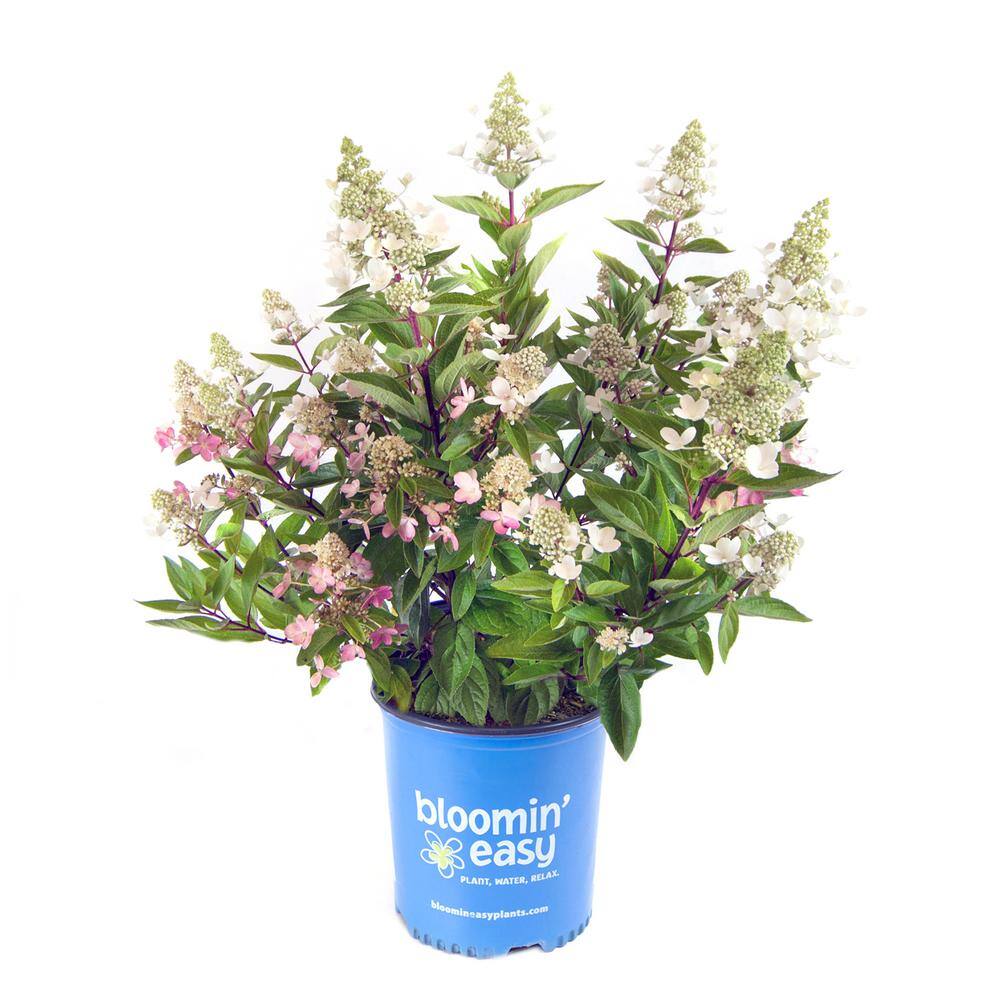The Flare Hydrangea: A Stunning Bloom That's
The Flare Hydrangea: A Stunning Bloom That's Easy to Grow
Introduction
If you're looking for a stunning hydrangea that's easy to grow, look no further than the Flare Hydrangea. This compact shrub produces large, conical blooms that start out white and gradually turn pink, then red, as the season progresses. The flowers are held upright on strong stems, making them perfect for cutting and displaying indoors.
Flare Hydrangeas are hardy in zones 4-8, so they can be grown in most parts of the country. They prefer full sun to partial shade and well-drained soil. Once established, Flare Hydrangeas are relatively drought-tolerant.
Main Content
Here are some of the things you need to know about growing Flare Hydrangeas:
- Planting: Flare Hydrangeas should be planted in the spring or fall. Choose a site that gets full sun to partial shade. The soil should be well-drained but not too sandy.
- Watering: Flare Hydrangeas need regular watering, especially during the first year after planting. Once established, they are more drought-tolerant.
- Fertilizing: Flare Hydrangeas should be fertilized in the spring with a balanced fertilizer. A slow-release fertilizer is a good option.
- Pruning: Flare Hydrangeas should be pruned in the spring. Remove any dead or damaged wood. You can also shape the shrub by removing any stray branches.
- Winter protection: In colder climates, Flare Hydrangeas may need some winter protection. Mulch the base of the shrub with a layer of leaves or bark. You may also need to cover the shrub with a burlap sack.
Care and Maintenance
Flare Hydrangeas are relatively easy to care for. With proper care, they will reward you with beautiful blooms for many years to come. Here are some tips for caring for your Flare Hydrangea:
- Water regularly, especially during hot, dry weather.
- Fertilize in the spring with a balanced fertilizer.
- Prune in the spring to remove dead or damaged wood.
- Mulch the base of the shrub to help retain moisture and protect the roots from cold weather.
Problems
Flare Hydrangeas are generally pest- and disease-free. However, they can be susceptible to powdery mildew. If you see powdery mildew on your shrub, you can treat it with a fungicide.
Troubleshooting
If your Flare Hydrangea is not blooming, there are a few things you can check:
- Make sure the shrub is getting enough sun.
- Fertilize the shrub in the spring.
- Prune the shrub in the spring.
- Check for pests or diseases.
If you've checked all of these things and your shrub is still not blooming, you may need to wait a year or two for it to mature.
Conclusion
The Flare Hydrangea is a stunning shrub that's easy to grow and care for. With its large, colorful blooms, it's sure to add a touch of beauty to your garden.
If you're looking for a hydrangea that's sure to turn heads, then the flare hydrangea is the perfect choice for you. These stunning plants are known for their large, flamboyant blooms that emerge pure white and then turn bright red from the bottom up. They're also relatively easy to care for, making them a great choice for even the most novice gardeners.
To learn more about the flare hydrangea, I recommend visiting . This website has a wealth of information on the plant, including its history, care requirements, and troubleshooting tips. You can also find photos and videos of the flare hydrangea in bloom, so you can see for yourself just how beautiful these plants are.
FAQ of flare hydrangea
1. What is a flare hydrangea?
A flare hydrangea is a type of panicle hydrangea that is known for its large, flamboyant blooms. The blooms emerge pure white and then turn bright red from the bottom up, giving the plant a unique and eye-catching appearance. Flare hydrangeas are relatively easy to care for and can be grown in a variety of climates.
2. How big does a flare hydrangea get?
Flare hydrangeas typically grow 2 to 3 feet tall and wide. They can be pruned to keep them smaller or larger, depending on your preference.
3. When does a flare hydrangea bloom?
Flare hydrangeas bloom in the summer, from June to September. The blooms can last for several weeks, depending on the weather.
4. How do I care for a flare hydrangea?
Flare hydrangeas prefer full sun to partial shade. They need well-drained soil and regular watering. Fertilize them once a year in the spring with a balanced fertilizer.
5. How do I get my flare hydrangea to bloom red?
The color of flare hydrangea blooms is affected by the pH of the soil. In acidic soil, the blooms will be blue or pink. In alkaline soil, the blooms will be red. You can adjust the pH of the soil by adding lime or sulfur.
Image of flare hydrangea
5 different images of "flare hydrangea" from Pinterest:
- Image 1: A close-up of a flare hydrangea flower, showing the white petals and the red stamens.

- Image 2: A full-bloomed flare hydrangea bush, with the flowers cascading down the branches.

- Image 3: A flare hydrangea in a garden, with the flowers surrounded by other plants.

- Image 4: A flare hydrangea in a vase, with the flowers arranged in a loose bouquet.

- Image 5: A flare hydrangea in a pot, with the flowers growing on a trellis.

Post a Comment for "The Flare Hydrangea: A Stunning Bloom That's"